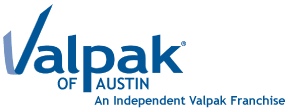Vets look at pets from a whole new perspective
 Sunday, April 18, 2010 at 12:14AM
Sunday, April 18, 2010 at 12:14AM The North American veterinary services industry includes about 20,000 veterinary centers and animal testing laboratories, with combined annual revenue of $17 billion.
Veterinary Centers of America (VCA) is the largest operator of animal hospitals and testing labs. The typical veterinary services company operates a single 4,000 square foot animal hospital with a staff of ten, including two veterinarians, and has annual revenue under $1 million.
Demand is driven mainly by thenumber of cats and dogs kept as pets. The profitability of an individual clinic depends on the volume of visits, since most costs are fixed, and by the range of services the practice offers. Large practices enjoy economies of scale in marketing and being able to afford costly onsite diagnostic equipment, which speeds results to animal owners. Small practices can compete by specializing or serving an exclusive geography.
Animal hospitals and clinics treat injuries and disease, but derive most revenue from animal health procedures like neutering and spaying, vaccinations, and regular checkups. Some animal hospitals also bathe, groom, board, and provide testing services. Sales of pet food, vitamins, and accessories account for about 15 percent of industry revenue.
The industry is divided into services for food animals (cattle, pigs, etc.) and pets (companion animals). Caring for dogs and cats accounts for almost 75 percent of the industry revenue.
A growing number of animal hospitals and clinics are now offering state-of-the art health care for the family pet. This includes non-invasive surgeries, human medical devices and services, super-premium foods aimed at specific ailments, and alternative therapies, such as acupuncture, massage, and behavioral therapies. High-end diagnostics, such as MRIs, will become more widely available for pets, with the price dropping accordingly. Online veterinary pharmaceuticals will become more mainstream. Pet lovers want, and are demanding the same treatment options for their pets as they can get for themselves.
Increased pet care also means an increase in pet insurance. The estimated 2005 market size is approximately $160 million, and is estimated to continue to grow by 25% to reach $200 million in 2006, according to the 2005 Packaged Facts “Pet Insurance in North America: The Market and Trends in the U.S. and Canada” report.
Other services seeing growth at veterinarians include pet grooming, boarding, pet photography, as well as daytime dog and pet sitting. More than $2.4 billion dollars will be spent on pet services, according to the APPMA, which continue to grow at around 5% annually.
Valpak direct mail services have been helping businesses reach their targeted consumers for almost 40 years. Valpak, North America's direct mail leader, delivers households that are projected to spend six percent more annually for pet supplies and 22 percent more for care and veterinary services than the average household. Promotions from Valpak are a great way to tell people they can come to you for the latest information about pet products and service.
 Bobby Adkins | Comments Off |
Bobby Adkins | Comments Off | 


